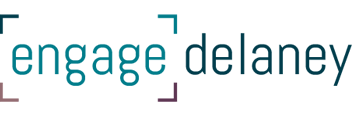A Case for Investing in Engagement
Fact: Public participation is on the rise. It’s a growing field with increasing interest across many sectors. We see in both our consulting work and our training work that more Canadians understand the value in investing the time, effort and resources needed to do engagement well.
While this is encouraging, we have also observed that many decision makers still underestimate the benefits of engagement and have a hard time seeing the risks of making decisions without it. There are many reasons for this; however, one reason cited is that some decision makers still see public participation as something that takes too much time, effort and resources. It can be challenging to demonstrate the short-term, tangible return on investment (ROI).
So, why should decision makers care about public participation (P2)?
For starters, P2 is no longer considered a courtesy that should be extended to the public – it is an expectation. Whether it’s removing asbestos from homes, closing down a community hospital, making cuts to public transportation, or building a pipeline through a national park – just to name a few examples – citizens expect to have a say in decisions that affect their lives!
Are there challenges associated with asking the public to participate in shared decision-making? Absolutely! It is entirely possible that the people affected will not like or agree with a decision being made. On the other hand, do decision makers stand to lose more by not asking in the first place? In many cases, yes! Making decisions in isolation can be both ineffective and costly.
You don’t have to look that far to find a long list of both public and private organizations that have paid (or are still paying) the price for an exclusionary approach to decision making. Project delays, cost overages, lost revenue, personal or environmental hazards, bad press – the list goes on. These are just a few consequences resulting from ignored requirements or lost opportunities to involve the public in decisions. All of the above cost organizations and citizens time, effort and money.
As far as a cost/benefit goes, it seems to us to make more sense to invest these resources upfront – rather than waiting until the damage has been done.
One of the world’s most successful investors, Warren Buffet, frequently describes risk as something “that comes from not knowing what you are doing”. This can apply to all decision making. So how can one fully understand the impacts of a decision – prior to acting – without taking the perspective and opinions of those who are affected into consideration?
Granted, taking the views of others into consideration is not always easy. It involves “playing offence” and confronting the unknown head on. It sometimes requires decision makers to put themselves in uncomfortable situations, and can even result in short-term misunderstandings. Although this is painful, and sometimes humbling, it is also a tremendous demonstration of a decision maker’s accountability, leadership and commitment to making the best decision possible.
The goal of public participation is not to make a decision less controversial or easier for people to accept. Investing time, energy and resources in public participation upfront, however, can provide decision makers with a greater degree of certainty by better understanding the challenges that lie ahead – together.
Even more importantly, it instills greater public confidence and trust in decision makers themselves – not just for the decision at hand, but for decisions in the future.



